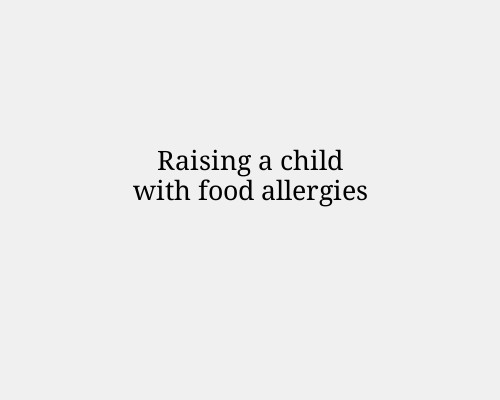
Raising a child with food allergies: what every parent needs to know
Food allergies in children are becoming increasingly common, and raising a child who lives with them requires careful planning, constant vigilance, and strong advocacy. As a parent, your role extends beyond simply avoiding trigger foods—you must create a safe environment at home, at school, and in social settings while also teaching your child how to manage their condition responsibly.
Understanding food allergies in children
A food allergy occurs when the immune system mistakenly identifies certain foods as harmful, triggering a reaction that can range from mild to life-threatening. Common allergenic foods in children include:
Milk
Eggs
Peanuts
Tree nuts (almonds, walnuts, cashews, etc.)
Soy
Wheat
Fish
Shellfish
Symptoms vary but may include hives, swelling, vomiting, coughing, difficulty breathing, and in severe cases, anaphylaxis, which requires immediate medical attention.
Diagnosis and medical support
If you suspect your child has a food allergy, consult a pediatric allergist. Testing may include:
Skin prick tests to check for reactions to allergens
Blood tests to measure IgE antibody levels
Oral food challenges (conducted under medical supervision)
Your doctor will provide a personalized allergy management plan, often including:
Epinephrine auto-injectors (such as EpiPen) for severe reactions
Antihistamines for mild symptoms
Clear emergency action instructions for caregivers, schools, and family members
Creating a safe home environment
Read labels carefully – Food manufacturers are required to list major allergens. Always check ingredient lists, even on familiar products, since formulations can change.
Prevent cross-contamination – Use separate cutting boards, utensils, and storage containers for allergen-free foods.
Educate family members – Ensure siblings, grandparents, and babysitters understand the seriousness of the allergy and how to respond in an emergency.
Meal planning – Cook at home as much as possible, and prepare safe substitutes for common foods (for example, oat milk instead of cow’s milk, or sunflower seed butter instead of peanut butter).
Navigating school and social life
Sending a child with food allergies into school or group settings can feel overwhelming, but preparation is key.
Communicate with the school – Meet with teachers, cafeteria staff, and administrators. Provide them with written medical instructions and ensure epinephrine auto-injectors are easily accessible.
Establish allergy-safe protocols – Request allergen-free zones if needed and discuss classroom celebrations in advance.
Educate your child – As your child grows, teach them to speak up about their allergies, ask about ingredients, and avoid food sharing.
Prepare for social gatherings – Always bring safe snacks or meals to birthday parties, sports events, and family gatherings.
Building your child’s confidence
Children with food allergies may feel left out or anxious about their condition. Supporting their mental and emotional well-being is just as important as keeping them physically safe.
Normalize their condition – Avoid treating your child as fragile; instead, empower them with knowledge and coping strategies.
Role-playing scenarios – Practice how to politely refuse unsafe food and how to explain their allergy to others.
Encourage inclusion – Work with teachers and other parents to make celebrations allergy- friendly whenever possible.
Connect with support groups – Meeting other children with allergies can help your child feel less isolated.
Traveling and eating out
Call ahead – Contact restaurants to discuss allergies before arriving.
Carry an allergy card – Written cards explaining your child’s allergens can help reduce miscommunication in restaurants or while traveling abroad.
Pack Emergency Snacks – Always have safe food on hand in case options are limited.
Emergency Preparedness
Despite precautions, accidental exposures can happen. Always:
Keep at least one epinephrine auto-injector available at all times.
Teach your child (when age-appropriate) how to self-administer it.
Ensure caregivers, teachers, and coaches know the allergy action plan.
Call emergency services after administering epinephrine, even if symptoms improve.
The long-term outlook
Some children outgrow certain allergies, particularly to milk, eggs, soy, and wheat. Others, such as peanut or shellfish allergies, are often lifelong. Regular check-ups with an allergist can help monitor changes and adjust management plans.
Raising a child with food allergies is a serious responsibility, but it does not have to limit their opportunities or joy. With preparation, education, and advocacy, children with food allergies can lead healthy, active, and fulfilling lives.